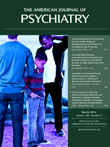We are living in a time of uncertainty. While the incidence of war across the globe has decreased (
1), the earth has been racked by an unprecedented wave of both natural and man-made disasters, including earthquakes, tornadoes, hurricanes, and terrorism. The World Health Organization defines a disaster as a “severe disruption, ecological and psychosocial, which greatly exceeds the coping capacity of the affected community” (
2). Simultaneously, the advancement of global technology has resulted in graphic images of destruction and human suffering being streamed from disaster sites. Wide use of camera phones and the popularity of websites, such as YouTube, allow images to quickly become viral and are brought into our living rooms in real time on a global scale. As such,
Disaster Psychiatry could not be more relevant to our times.
Building on decades of experience by Disaster Psychiatry Outreach and the Group for the Advancement of Psychiatry and its Committee on Disasters and Terrorism, this book is not only helpful to psychiatrists but also to those providing mental health services in general. Disaster Psychiatry is organized across 21 chapters into four sections: “Readiness,” “Evaluation,” “Treatment,” and “Emerging and Other Topics.” As a clinically oriented text, each chapter is drawn from experientially based wisdom coupled, when possible, with evidence-based literature. Helpful tables and numerous case histories illustrate the main tenets, providing clinical pearls to guide the psychiatrist in the field. The authors conclude each chapter with teaching points and a set of five review questions.
With the rise of what have been called “parachuting psychiatrists,” the book emphasizes the importance of being involved in a collective, organized effort rather than as an unaffiliated volunteer who may have good intentions but perhaps possesses an office-based skill set ill-matched to the situation. Learning about one's local response structure provides the opportunity for the interested clinician to become part of a local response group accountable for credentialing, screening, and training. Some disasters groups also solicit volunteers who may be referred to federal agencies. Because of the chaotic nature of disasters, with the accompanied destruction of infrastructure, emphasis on psychological first aid integrated into the early response has become the mainstay. There is a growing body of literature relating to the unique challenges of the disaster environment.
We are reminded by the authors of the importance of not pathologizing what may be normal human reactions in the aftermath of disasters and of the need to be flexible, working at times outside of the box. The book reviews traditional clinical interventions but also explores vital information important to keep in mind when assisting particularly vulnerable populations, including children and adolescents, the elderly, women, the seriously mentally ill, the physically disabled, and ethnic minorities. The importance of understanding communities as they functioned prior to disasters, along with working with local stakeholders, is relevant in order to work both locally and internationally.
As standardized responses across agencies and nongovernmental organizations remain to be developed, this highly readable overview targeting psychiatrists is an important contribution to the advancement of the field.

